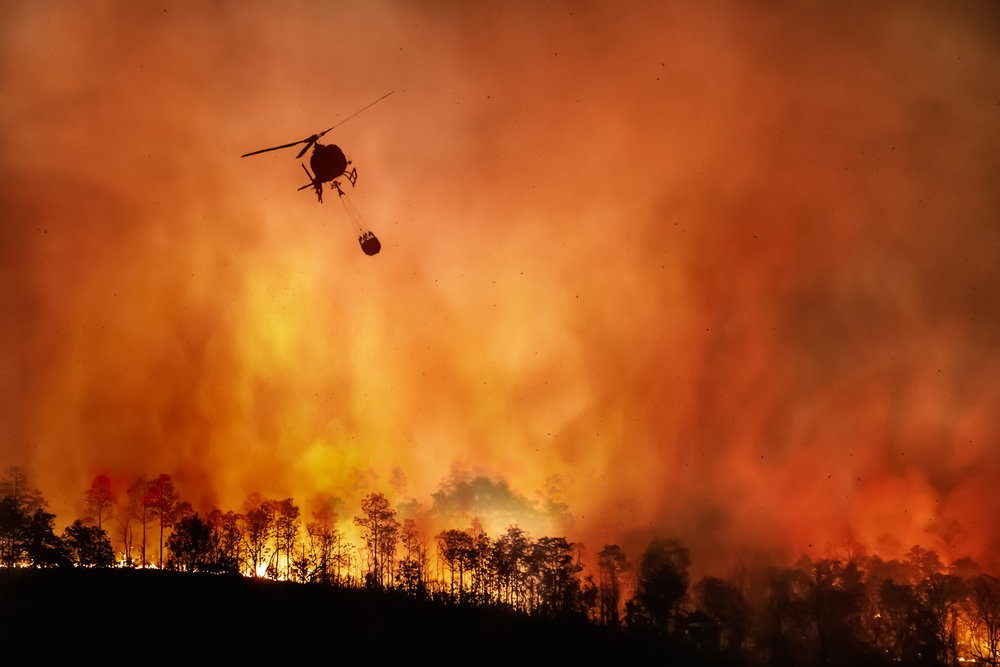The Oregon Occupational Safety and Health Administration (Oregon OSHA) is proposing state safety rules for worker exposures to extreme heat and wildfire smoke. The rules “would provide the strongest such protections in the nation,“ according to the agency.
Federal OSHA has no standard for wildfire smoke exposures but issued an advance notice of proposed rulemaking October 27, 2021, for a heat illness prevention standard.
The Oregon rule proposals build on temporary emergency rules adopted in summer 2021.
The proposed heat illness prevention rule encompasses a variety of worker protections, including access to shade and cool water, work/rest schedules, information and training, and other preventive actions and plans. The proposed wildfire smoke rule includes exposure assessments, respiratory protection, and communication and training requirements.
“These rulemaking efforts demonstrate our commitment to bolstering Oregon’s ability to protect workers–especially vulnerable workers who work outdoors–from extraordinary hazards that have been worsened by climate change,” Andrew Stolfi, Oregon Department of Consumer and Business Services (DCBS) director, said in an agency statement. Oregon OSHA is a division of the DCBS.
“The dangers of extreme heat and wildfire smoke are not going away,” Stolfi continued. “That is why we must continue to build up our safeguards against them.”
The heat illness prevention rule would apply to any indoor or outdoor workplace where heat dangers are caused by the weather and where the heat index equals or exceeds 80 degrees Fahrenheit.
Employer requirements would include:
- A written heat illness prevention plan that includes acclimatization procedures for employees to gradually adapt employees to working in the heat;
- Sufficient shade that is immediately and readily available;
- An adequate supply of cool drinking water that’s immediately and readily available to employees, with plenty of opportunities to stay hydrated;
- Additional requirements when the heat index equals or exceeds 90 degrees Fahrenheit—the ability for employees to communicate directly with supervisors and to call for emergency services, as well as the implementation of a heat illness prevention work/rest schedule, adjusted for effective protection; and
- Annual training and information for all employees and supervisors in a language they understand.
The wildfire smoke rule would apply to employers whose employees are, or will be, exposed to wildfire smoke where the ambient air concentration for fine particulate matter (also known as PM2.5) equals or exceeds an Air Quality Index (AQI) of 101. The AQI is the EPA’s index for reporting air quality.
An AQI of 101 is considered unhealthy for sensitive groups. Sensitive groups include children younger than 18 and adults older than 65, people with diabetes and heart and lung conditions, and pregnant women.
Employer requirements would include:
- Determining and monitoring employee exposure at the start of each shift to gauge the appropriate exposure controls;
- Providing employees with filtering facepiece respirators (FFRs), such as N95s approved by the National Institute for Occupational Safety and Health (NIOSH), for voluntary use when exposure equals or exceeds an AQI of 101;
- Ensuring employees wear NIOSH-approved FFRs when exposure is at or above an AQI of 251; and
- Providing annual information and training for employees who may be exposed to wildfire smoke.
The rule would include a Wildfire Smoke Respiratory Protection Program for respirators used exclusively for wildfire smoke that employers could follow instead of conducting medical evaluations and fit testing under the state Respiratory Protection Standard. However, employers that provide employees with elastomeric respirators instead of FFRs must comply with the respiratory protection standard’s requirements.
The rule development process involved input from employer and labor stakeholders, as well as community and worker stakeholder listening sessions and review by rule advisory committees.

